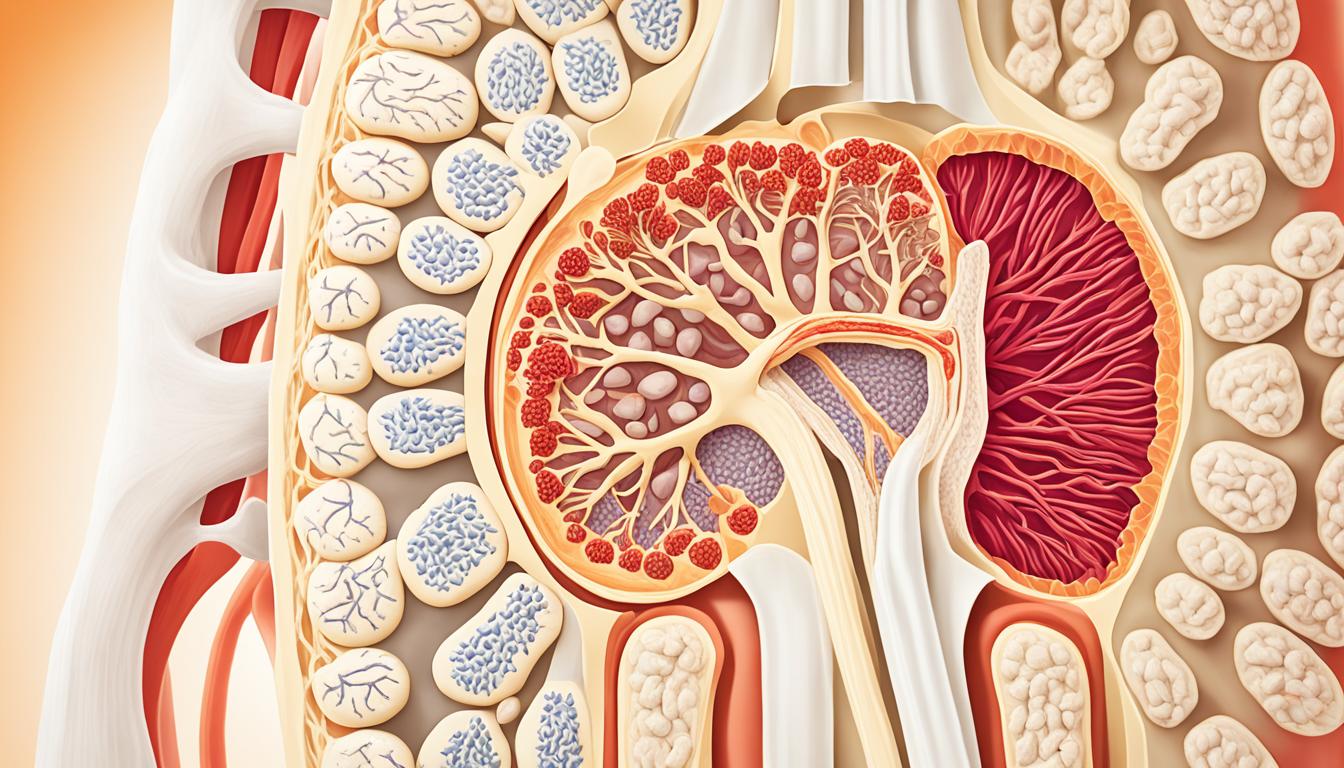Celiac trunk compression syndrome happens when a part of the body called the celiac artery gets squished by a ligament. This leads to issues like bad stomach pain and losing weight. Telling if someone has this problem is hard because its signs are similar to other stomach problems. Doctors use special tests to get the right diagnosis.
How this syndrome is treated depends on how bad the symptoms are and their cause. For light cases, changing what you eat or dropping some pounds might help. Doctors can also give you drugs to ease pain and help your blood flow. But, if the issue is big, surgery might be the only way to stop the artery from getting pinched. Lately, using stem cells to fix the damaged tissue and help blood flow is getting attention as a new possible treatment.
Key Takeaways:
- Celiac trunk compression syndrome is a rare condition characterized by the compression of the celiac artery by the median arcuate ligament.
- Symptoms of celiac trunk compression syndrome include severe abdominal pain and weight loss.
- Diagnosing celiac trunk compression syndrome can be challenging but can be aided by specialized imaging techniques.
- Treatment options include lifestyle changes, medication, surgical intervention, and the emerging field of stem cell therapy.
- Early diagnosis and appropriate treatment can help alleviate symptoms and improve patient outcomes.
Symptoms and Causes of Celiac Trunk Compression Syndrome
The main symptom of celiac trunk compression syndrome is severe abdominal pain. It’s a constant, cramping pain that comes after eating. This pain can be so strong, it makes daily life hard. Sometimes, the pain is felt in the back.
People with this syndrome might also have other signs. They might lose weight, feel sick to their stomach, or even throw up. They might feel full very quickly when eating.
The exact reason for this syndrome isn’t fully known. Doctors think it happens when the celiac artery is pressed by the median arcuate ligament. This pressing can lessen blood flow to the belly area. This may lead to the strong pain and other feelings.
Diagnosing Celiac Trunk Compression Syndrome
Diagnosing celiac trunk compression syndrome is tough because the signs are like other stomach illnesses. Yet, special tests can pin down this problem.
Gastric Exercise Tonometry
Gastric exercise tonometry checks the stomach’s pressure and oxygen. It’s key for finding out if someone has celiac trunk compression syndrome. It tracks stomach pressure changes when someone moves. This shows if the celiac artery is under stress. This test is vital for confirming the condition and deciding on treatment.
Angiography
Angiography is another way to diagnose this syndrome. It works by putting contrast dye in the arteries and then taking X-rays. This helps doctors see how bad the celiac artery’s compression is. It’s important for planning treatment.
Using these tests, doctors can accurately spot celiac trunk compression syndrome. Then, they can choose the best treatment for each patient.
| Diagnostic Technique | Benefits |
|---|---|
| Gastric Exercise Tonometry | Provides valuable information on gastric pressure and oxygen levels |
| Angiography | Visualizes blood flow and identifies celiac artery compression |
Treatment Options for Celiac Trunk Compression Syndrome
The treatment for celiac trunk compression syndrome varies by its symptoms and cause. In lighter cases, changes in diet and losing weight can make a big difference. These changes lower stress on the celiac artery, which helps improve blood flow.
If more help is needed, doctors might give you medicine. Pain meds can lessen stomach pain. Some drugs increase blood flow, which can ease the artery’s pressure. These meds work with other treatments for a full care plan.
For severe cases, surgery might be the best option. Surgeons can release the ligament or do a bypass to fix blood flow. This choice usually comes after trying other treatments without success and when symptoms are bad.
Stem cell therapy is also being explored for this syndrome. Stem cells might help repair the area and boost blood flow. But, experts need to do more studies to know if this is safe and works well.
To wrap up, celiac trunk compression syndrome is rare but can be serious. Getting diagnosed early and having the right treatment can reduce symptoms and help the patient feel better.

